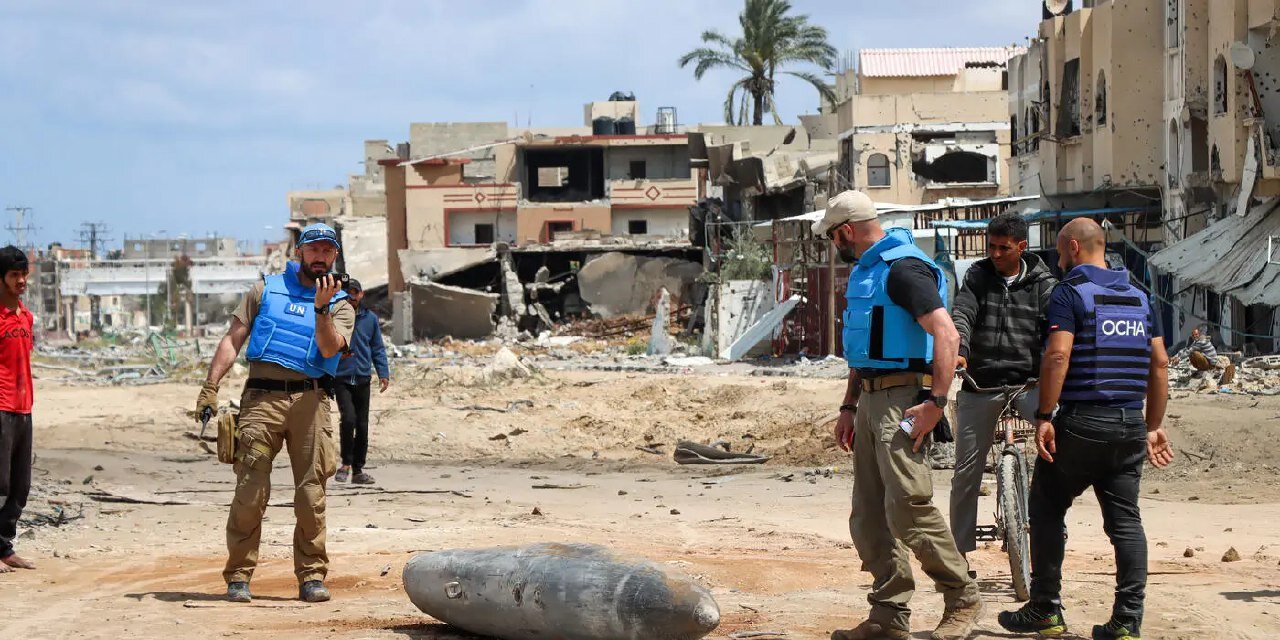
TEHRAN- Israel’s months-long military assault in Khan Younis has left a trail of destruction and posed grave risks to the Palestinians who are returning to the city nearly a week after the regime’s troop withdrawal.
On Sunday, the Israeli army said it has withdrawn its ground troops from the southern Gaza Strip, including Khan Younis.
“Today, Sunday, April 7th, the IDF’s 98th commando division has concluded its mission in Khan Younis. The division left the Gaza Strip in order to recuperate and prepare for future operations,” the army said in a statement.
It, however, said one brigade, which is typically made of a few thousand soldiers, has remained in southern Gaza.
“A significant force led by the 162nd division and the Nahal brigade continues to operate in the Gaza Strip and will preserve the IDF’s freedom of action and its ability to conduct precise intelligence-based operations.”
A team of United Nations experts visited Khan Younis on Wednesday to survey the damage following the pullout of the Israeli forces.
“Widespread destruction”
According to the UN Office for the Coordination of Humanitarian Affairs (OCHA), the team reported “widespread destruction.”
“Every building they visited – and most of those they observed – had been damaged, and paved roads had been reduced to dirt tracks. They inspected a UN warehouse, four medical centers, and eight schools, and all but one had significant damage,” OCHA added.
It touched upon the threats posed to Palestinians by Israel’s unexploded bombs.
“Streets and public spaces in Khan Younis are littered with unexploded ordnance, posing severe risks to civilians. The team found unexploded 1,000-pound bombs lying on main intersections and inside schools,” the UN agency said.
Apart from OCHA experts, members of other UN agencies such as UNRWA, the WHO and the WFP were in the team that visited Khan Younis.
“Rubble and dirt”
The director-general of the World Health Organization said the team surveying the scene described the destruction in Khan Younis as “disproportionate to anything one can imagine”.
“No building or road is intact, there is only rubble and dirt,” Tedros Adhanom Ghebreyesus wrote on X, formerly known as Twitter.
The WHO chief also pointed to the damages caused by Israeli strikes on medical facilities in Khan Younis.
“Attacks and hostilities have left Nasser Medical Complex, Al-Amal and Al-Khair hospitals non-functional. These facilities have no oxygen supply, water, electricity or sewage system,” Tedros noted.
Returning home
Thousands of Palestinian people began returning to Khan Younis a day after Israelis left the city.
The Israeli pullout gave the Palestinians a chance to see the wreckage of their homes and retrieve some possessions.
But Israel’s mass destruction has turned Khan Younis into an unlivable city, making it difficult for its residents to resettle.
According to Corey Scher of City University of New York and Jamon Van Den Hoek of Oregon State University, two mapping experts who have been using satellite imagery to track destruction, an estimated 55 percent of the buildings in the Khan Younis area – around 45,000 buildings – have been destroyed or damaged.
Khan Younis invasion
Israel declared war on Gaza on October 7 after Hamas carried out a surprise military operation in southern Israel.
In late October, Israel launched its ground operation in Gaza. The regime sent its troops to Khan Younis in December.
Israel claimed Khan Younis was a major stronghold of the Hamas resistance movement.
The Israeli army has also claimed that its military assaults in the city have killed thousands of Hamas fighters and inflicted heavy damage to a vast network of tunnels used by the movement.
Presently, the withdrawal of the Israeli army from Khan Younis indicates the regime’s failure to achieve its stated goal of destroying Hamas and crushing the Palestinian resistance.
Palestinian groups have put up resistance against Israelis in the city dealing severe blows to the regime’s army.
More than 600 Israeli troops have been killed since October 7. This includes over 250 Israeli soldiers who have lost their lives in ground battles with resistance fighters in the Gaza Strip. Thousands of other Israeli forces have also been injured.
Currently, it remains unclear whether Israel’s pullout of southern Gaza would delay a long-threatened incursion into Rafah, although the regime’s officials have stressed that a ground offensive of the city will be carried out.
More than half of Gaza’s 2.3 million population is living in Rafah. They fled to the city which was declared as a safe zone by Israel. The regime, however, has repeatedly carried out deadly airstrikes there.
Israel has killed more than 33,600 Palestinians in the Gaza Strip since October 7.
The regime has committed acts of mass massacres and genocide in the Palestinian territory over the past six months. Israel continues to defy international calls to bring a halt to its atrocious crimes in Gaza.

No comments:
Post a Comment